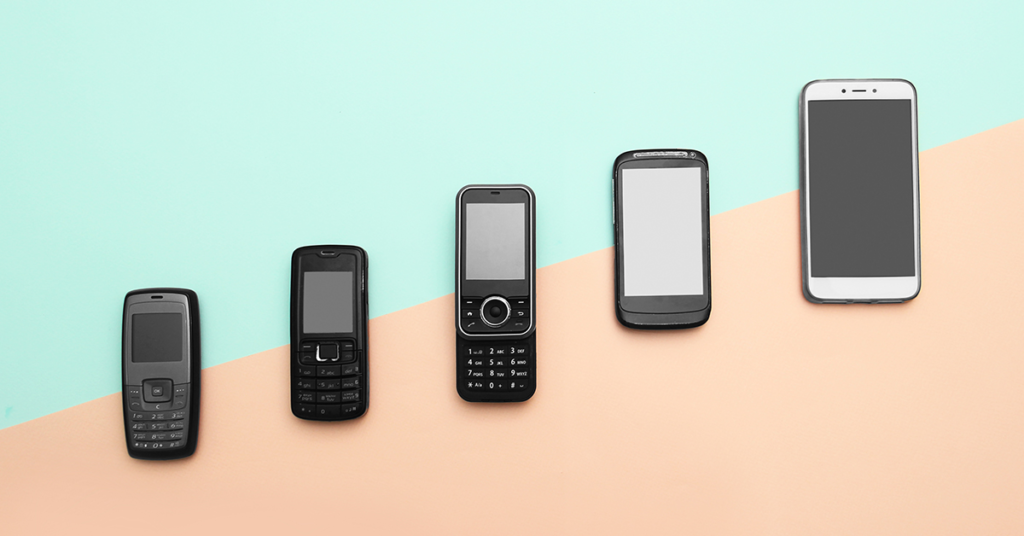For a brand to be truly successful and stand the test of time, it needs to be prepared to respond and evolve as the environment around it shifts. In contrast to a rebrand, brand evolution is about small baby steps in response to feedback. We’re going to explore brand fundamentals, a rebrand vs. a brand evolution, some key examples of businesses that have successfully evolved and how you can evolve.
Let’s get stuck into it!
What is a brand?
More than a logo, a brand is your company’s identity. It’s the tone of voice, the colours, the values and messaging and it’s what should differentiate you from your peers.
A brand is often why a customer chooses to interact with you as opposed to another business. While some aspects of a brand are tangible like colours and values, other aspects are more challenging to describe, for instance, how someone feels when they engage with your business.
Typically, well-known businesses that stand the test of time have taken years to cultivate their brand and it’s likely that their brand is continuously evolving to ensure its current.
Brand evolution vs. Rebrand
A rebrand is a significant shift in your brand identity. Successful businesses often expand significantly over time and as a result, it’s unsurprising that they will typically undergo a comprehensive rebrand at least once or twice throughout their history.
A brand evolution, on the other hand, is baby steps in response to customer feedback, societal shifts, changing trends and internal transformation.
Evolving your brand enables your brand to remain current without having to undertake an expensive and lengthy rebrand in response to every change that may arise.
If you’re not sure whether you rebrand or evolve, read our blog, ‘5 Signs it’s Time to Rebrand.’
Brand evolution: Who has done it?
Great question! Before you consider the how you need to determine the why. Ask yourself why you believe your brand needs to evolve.
Let’s take a minute to review some big and small brands that have evolved their brand recently…
Commercial airlines
When COVID-19 hit around the globe in 2020, airlines were one of the many industries that quickly suffered big hits with some having to cancel 90% of their flights. Some airlines like Virgin Atlantic and United and American Airlines pivoted and switched to cargo-only flights. These airlines used those empty seats to transport essential items like grocery items and healthcare provisions.
Jewellery designer
Australian-based jewellery designer, Holly Ryan, lost a significant portion of her income last year when wholesale orders were cancelled all around the world. She decided to open her workroom to repair broken jewellery, as well as redesigning new pieces using metal from old pieces of jewellery. She told The Sydney Morning Herald, “I decided that while people are at home Marie Kondo-ing their houses and all their wardrobes, this is an opportunity for people to redesign and reuse the materials they already have in their jewellery box, and that doesn’t need to be the stuff that they’ve bought from me.”
Breweries
Many breweries helped with the demand for hand sanitiser during 2020. Due to unexpected global demand, there were serious shortages of hand sanitiser when COVID first hit Australia. As breweries typically had ethanol on hand, they were able to make a relatively easy transition which helped to serve a community-wide problem. It also helped breweries to maintain their own cash flow while their traditional sales were impacted by the closure of hospitality events.
These examples have highlighted brand evolution throughout COVID. However, brands have been evolving long before COVID.
Nike
For decades, Nike was accused of using sweatshops to produce their apparel including child labour and exploitation. While Nike arguably still has a long way to go, they have since increased their minimum wage and now regularly audit their factories for occupational health and safety.
How can I evolve my brand?
Is your brand feeling a little stale? Have you been able to respond to the rapid changes the world has faced over the past 18 months? Let’s unpack some tips to evolve your brand and remember, evolution is about small steps so don’t get too overwhelmed. There is no need to do everything all at once!
Online user experience
While many brands have resisted the allure of the online world in favour of maintaining a face-to-face presence, with the constant closures and restrictions, a lot of businesses have had to adapt fast to survive.
The businesses that did evolve often did so quickly and may have missed out on some important opportunities.
If you’re wanting to evolve your online presence and review your website, consider the following:
- When was the last time you updated?
- Is it mobile-friendly?
- Does it consider the user experience (UX)?
- Does it have the information people need?
- Is it visually appealing?
- Is the information current?
- Is your site accessible for people who may be vision or hearing impaired?
If you’re now offering online services or options like Click and Collect, it’s time to share and disseminate that information across your other channels like email marketing and social media. As above, these channels also need to be maintained and kept up to date as well as being accessible.
If you’re looking for some support with your digital presence, get in touch.
Key messages and brand values
Your brand values, your ethos and your reason for being may understandably change over time as societal shifts occur.
Climate change was not a concern for most of the world 30 years ago. Marriage equality was not allowed within Australia even in recent times and now with the pandemic, messages around health and safety have never been so important to businesses.
Review your key messages and brand values and consider the following:
- Do your messages and values align?
- Do your clients know what you stand for?
- Have you evolved with the times?
Internal comms
While your brand values need to speak both internally and externally, there is still a need to have an additional focus on internal comms.
Your team is an essential part of your brand. They need to be able to reflect your workplace values and cultures just as you do.
With the advent of COVID and world events like protests, there are additional needs that a business needs to take some responsibility for, such as the physical and mental wellbeing of their team.
If you want to evolve your internal comms, consider the following:
- Do your staff know what you stand for?
- Do they know how best to represent your business?
- Have you done enough to provide them with a safe working environment or an alternative?
- Do you have practices in place to support your staff if they are working remotely?
Remember, evolution is an ongoing journey…
Throughout this piece, we’ve explored some of the ways businesses have evolved as well as areas to consider if you believe your brand needs to evolve. As far as we’re concerned, brand evolution is a constant ongoing state. Things around us are always changing, and as a result, we have the choice to either respond, adapt and evolve or remain stagnant and miss out on vital opportunities as our competitors continue to evolve.

